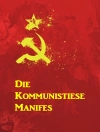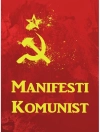At no time in American history has an understanding of the role and the art of diplomacy in international relations been more essential than it is today. Both the history of U.S. diplomatic relations and the current U.S. foreign policy in the twenty-first century are major topics of study and interest across the nation and around the world.
Spanning the entire history of American diplomacy—from the First Continental Congress to the war on terrorism to the foreign policy goals of the twenty-first century—Guide to U.S. Foreign Policy traces not only the growth and development of diplomatic policies and traditions but also the shifts in public opinion that shape diplomatic trends. This comprehensive, two-volume reference shows how the United States gained ‘the strength of a giant’ and also analyzes key world events that have determined the United States’ changing relations with other nations.
The two volumes’ structure makes the key concepts and issues accessible to researchers:
- The set is broken up into seven parts that feature 40 topical and historical chapters in which expert writers cover the diplomatic initiatives of the United States from colonial times through the present day.
- Volume II’s appendix showcases an A-to-Z handbook of diplomatic terms and concepts, organizations, events, and issues in American foreign policy.
- The appendix also includes a master bibliography and a list of presidents; secretaries of state, war, and defense; and national security advisers and their terms of service.
This unique reference highlights the changes in U.S. diplomatic policy as government administrations and world events influenced national decisions. Topics include imperialism, economic diplomacy, environmental diplomacy, foreign aid, wartime negotiations, presidential influence, NATO and its role in the twenty-first century, and the response to terrorism. Additional featured topics include the influence of the American two-party system, the impact of U.S. elections, and the role of the United States in international organizations. Guide to U.S. Foreign Policy is the first comprehensive reference work in this field that is both historical and thematic. This work is of immense value for researchers, students, and others studying foreign policy, international relations, and U.S history.
ABOUT THE EDITORS
Robert J. Mc Mahon is the Ralph D. Mershon Professor of History in the Mershon Center for International Security Studies at The Ohio State University. He is a leading historian of American diplomatic history and is author of several books on U.S. foreign relations.
Thomas W. Zeiler is professor of history and international affairs at the University of Colorado at Boulder and is the executive editor of the journal Diplomatic History.
关于作者
Thomas W. Zeiler is professor of history and director of the Program on International Affairs at the University of Colorado, Boulder. Dr. Zeiler is also the former chair of the Department of History. Having conducted extensive research on the international economy, U.S. foreign economic policy, and globalization, he has published Free Trade, Free World: America and the Advent of GATT (1998); Globalization and the American Century (2003), with co-editor Alfred Eckes; and Guide to U.S. Foreign Policy: A Diplomatic History (2012), with co-editor Robert J. Mc Mahon.Dr. Zeiler is currently doing research on free markets, free trade, and globalization. He has held Fulbright lecture awards to Buenos Aires, Argentina, and Tokyo, Japan. He served as the president of the Society for Historians of American Foreign Relations (SHAFR) in 2012 and, from 2010 to 2014, as editor of Diplomatic History, the journal of record in the field of U.S. foreign relations. He also serves on the Historical Advisory Committee on Documentation at the U.S. Department of State.












